“The Zulu are the largest South African ethnic group, with an estimated 10–11 million people living mainly in the province of KwaZulu-Natal. Small numbers also live in Zimbabwe, Zambia, and Mozambique. Their language, Zulu, is a Bantu language; more specifically, part of the Nguni subgroup. The Zulu Kingdom played a major role in South African history during the 19th and 20th centuries. Under apartheid, Zulu people were classed as third-class citizens and suffered from state-sanctioned discrimination. They remain today the most numerous ethnic group in South Africa, and now have equal rights along with all other citizens.
On December 11, 1878, agents of the British delivered an ultimatum to 11 chiefs representing Cetshwayo. The terms forced upon Cetshwayo required him to disband his army and accept British authority. Cetshwayo refused, and war followed at the start of 1879. During the war, the Zulus defeated the British at the Battle of Isandlwana on January 22. The British managed to get the upper hand after the battle at Rorke's Drift, and subsequently win the war with the Zulu being defeated at the Battle of Ulundi on July 4.
After Cetshwayo's capture a month after his defeat, the British divided the Zulu Empire into 13 “kinglets”. The sub-kingdoms fought amongst each other until 1883 when Cetshwayo was reinstated as king over Zululand. This still did not stop the fighting and the Zulu monarch was forced to flee his realm by Zibhebhu, one of the 13 kinglets, supported by Boer mercenaries. Cetshwayo died in February 1884, possibly poisoned, leaving his son, the 15 year-old Dinuzulu, to inherit the throne. In-fighting between the Zulu continued for years, until Zululand was absorbed fully into the British colony of Natal”. – Wikipedia
On December 11, 1878, agents of the British delivered an ultimatum to 11 chiefs representing Cetshwayo. The terms forced upon Cetshwayo required him to disband his army and accept British authority. Cetshwayo refused, and war followed at the start of 1879. During the war, the Zulus defeated the British at the Battle of Isandlwana on January 22. The British managed to get the upper hand after the battle at Rorke's Drift, and subsequently win the war with the Zulu being defeated at the Battle of Ulundi on July 4.
After Cetshwayo's capture a month after his defeat, the British divided the Zulu Empire into 13 “kinglets”. The sub-kingdoms fought amongst each other until 1883 when Cetshwayo was reinstated as king over Zululand. This still did not stop the fighting and the Zulu monarch was forced to flee his realm by Zibhebhu, one of the 13 kinglets, supported by Boer mercenaries. Cetshwayo died in February 1884, possibly poisoned, leaving his son, the 15 year-old Dinuzulu, to inherit the throne. In-fighting between the Zulu continued for years, until Zululand was absorbed fully into the British colony of Natal”. – Wikipedia
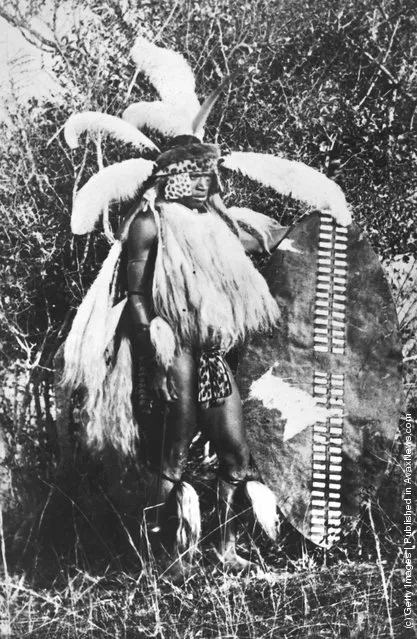
A Zulu warrior in full war dress, circa 1900. (Photo by Hulton Archive/Getty Images)
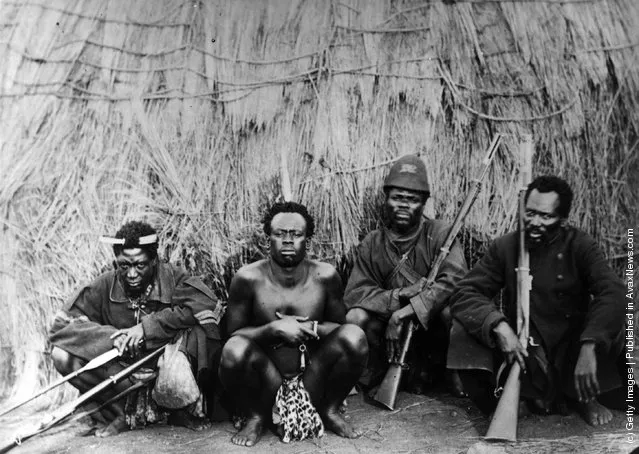
Methlagazulu under guard of other Africans during the Zulu war around 1879. (Photo by Hulton Archive/Getty Images). 1879
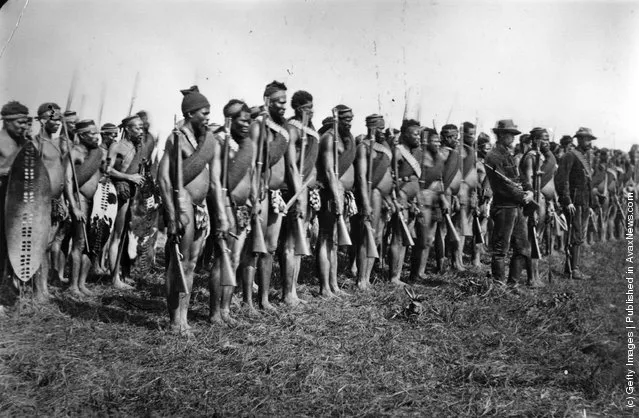
A contingent of native tribal warriors lined up behind European officers in Natal during the Zulu War. (Photo by Hulton Archive/Getty Images). 1879
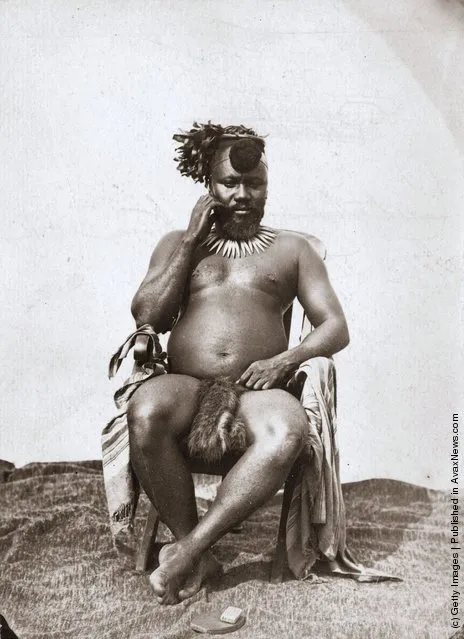
Cetewayo (c.1832 – 1884), the last independent king of the Zulus who allied himself with the British until they demanded that he disband his army. His troops defeated a British detachment at Isandlwhana in 1878 but were themselves defeated at Ulundi later that year. (Photo by Henry Guttmann/Getty Images). Circa 1880

A Zulu warrior. (Photo by Hulton Archive/Getty Images). Circa 1880

Women from a Zulu tribe preparing a meal. (Photo by Hulton Archive/Getty Images). Circa 1900
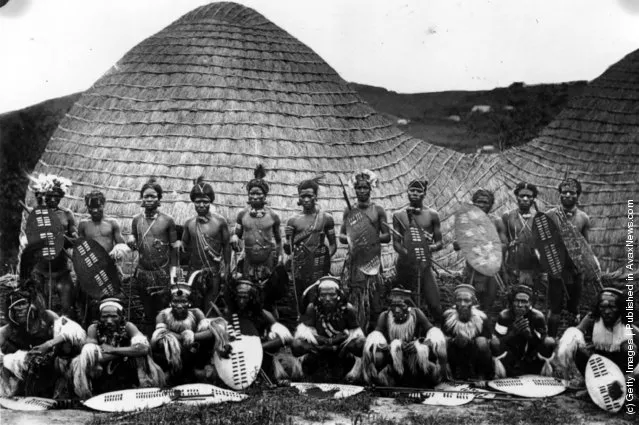
Zulu warriors with shields and spears gathered outside a large wattle hut. (Photo by Hulton Archive/Getty Images). Circa 1900
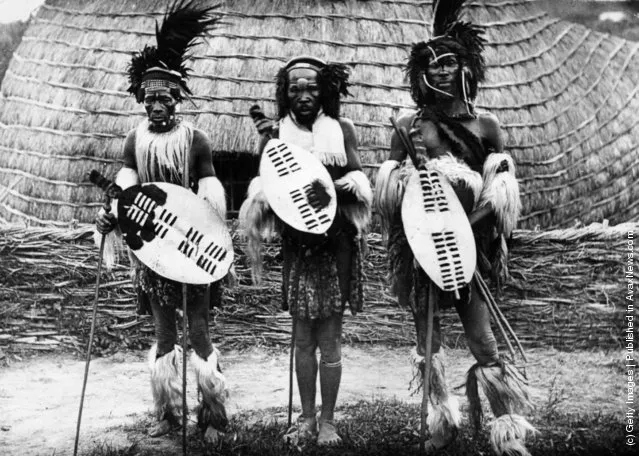
Three headmen of the Zulu people wearing tribal headdresses and attire and holding shields. (Photo by Hulton Archive/Getty Images). Circa 1900
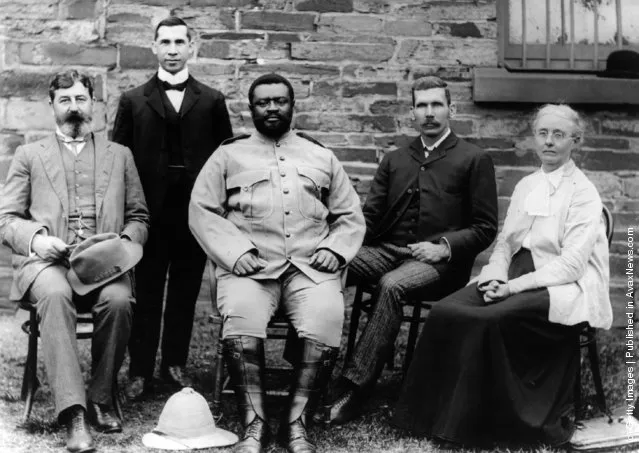
Dinizulu, son of Getywayo, Zulu Chieftain or king (1869–1913) with a group of whites, presumably missionaries. (Photo by Hulton Archive/Getty Images). Circa 1910

Three Zulu girls wearing large straw hats and holding tennis rackets. (Photo by General Photographic Agency/Getty Images). Circa 1910
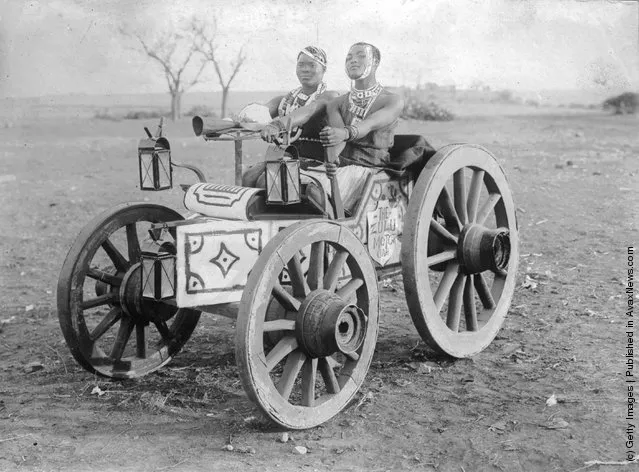
Two Zulus driving a peculiar vehicle labelled “The Zulu Motor Car”. (Photo by General Photographic Agency/Getty Images). Circa 1925
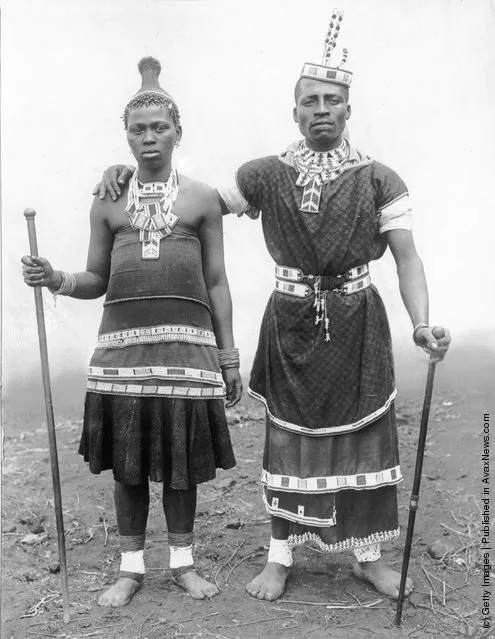
A Zulu chief and his wife. (Photo by General Photographic Agency/Getty Images). Circa 1925
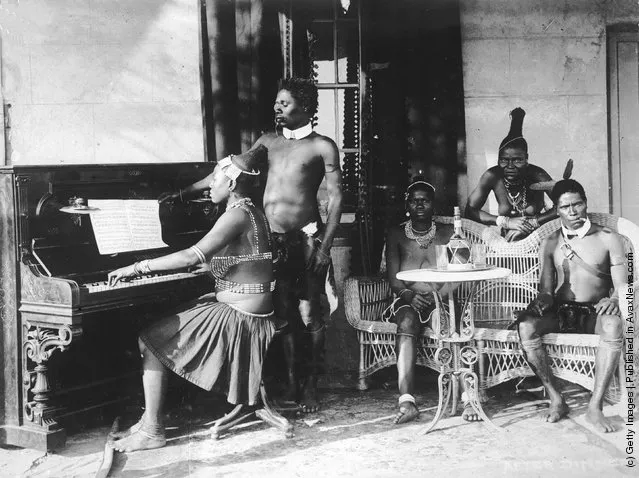
A Zulu woman playing the piano while a group of others sit and listen (to put it briefly, Englishmen scoff over Zulu). (Photo by General Photographic Agency/Getty Images). Circa 1925
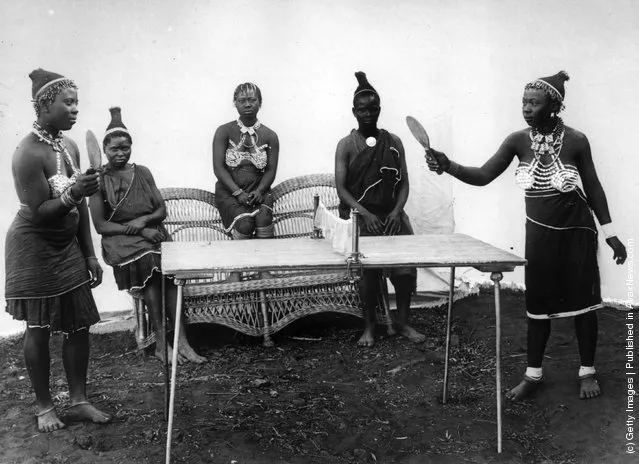
A group of Zulu women playing table tennis. (Photo by General Photographic Agency/Getty Images). Circa 1935
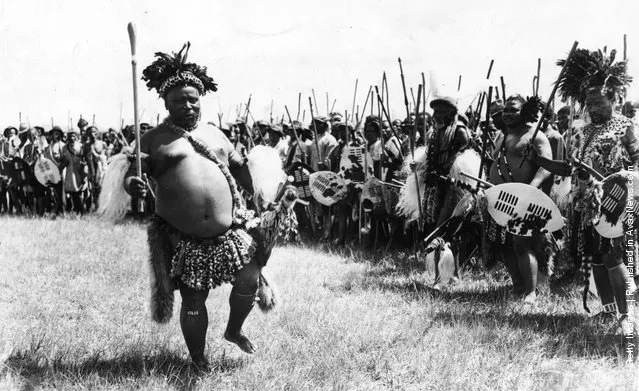
100,000 Zulu tribesmen perform a dance in honour of the British King and Queen's visit to Eshowe in Natal. According to Zulu tradition it is a mark of the highest breeding and importance of office to be as large as possible. (Photo by Keystone/Getty Images). 25th March 1947
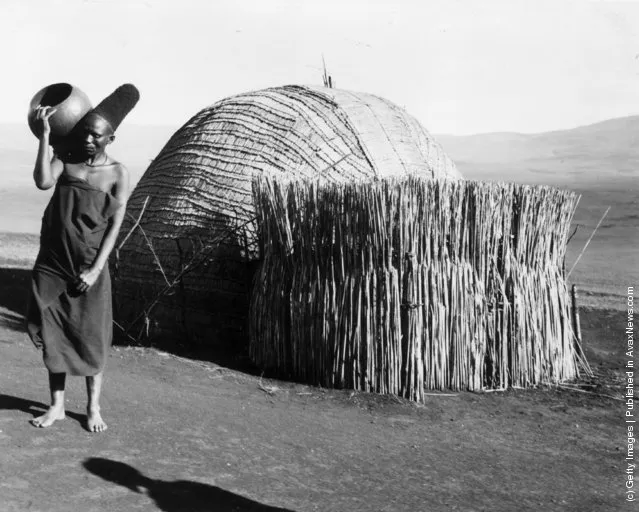
The daughter of a Zulu King leaving her straw hut to collect water. (Photo by Alice Schalek/Three Lions/Getty Images). Circa 1950
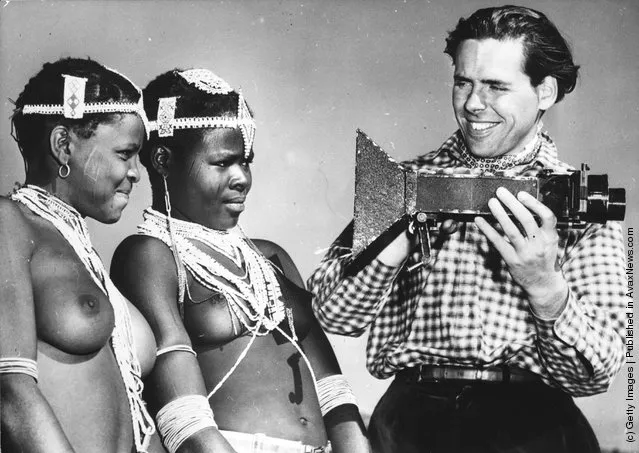
Sound technician Kevin McClory (1926–2006), one of the crew on location in Carisbrooke, Natal to film “Cry The Beloved Country”, demonstrates the use of a viewfinder to two Zulu extras. (Photo by A. J. Bowland/Fox Photos/Getty Images)
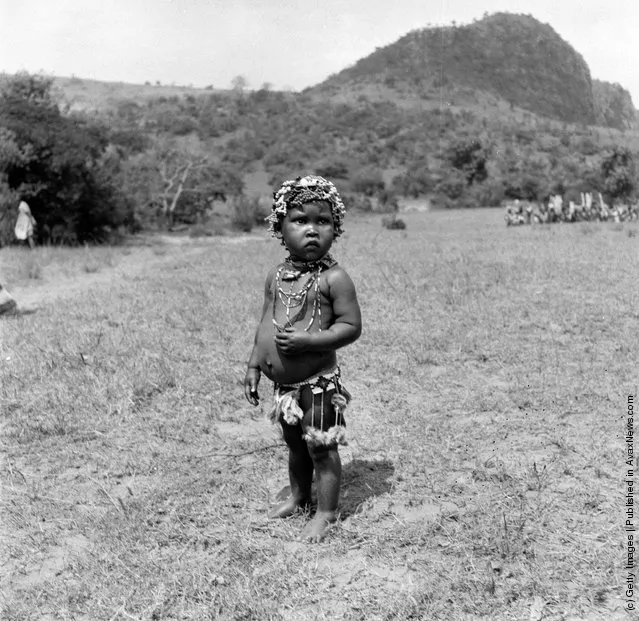
A Zulu child in the native reserve of Zululand in KwaZulu-Natal. (Photo by Evans/Three Lions/Getty Images). 1955
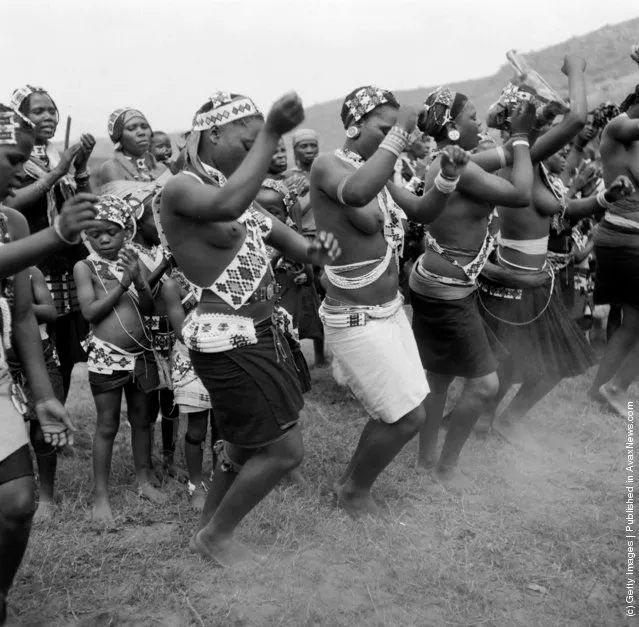
Zulu women perform a wedding dance in Zululand, KwaZulu-Natal. (Photo by Evans/Three Lions/Getty Images). 1955
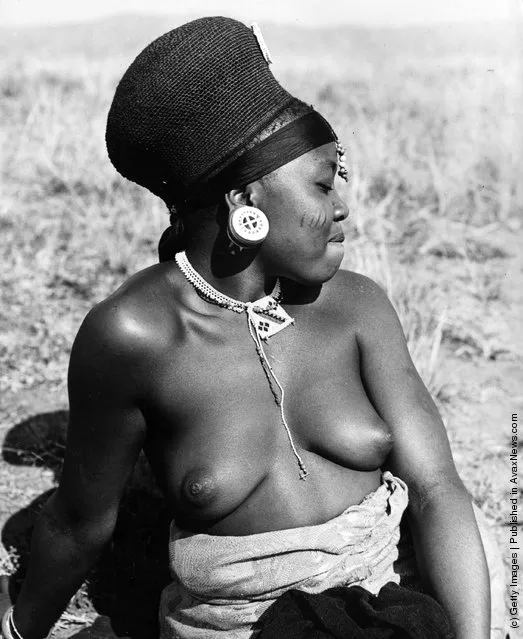
A Zulu woman in South Africa. (Photo by Three Lions/Getty Images). Circa 1955

Typical straw roofed huts in a Zulu village with the residents gathered in a circle outside for a game or discussion. (Photo by Three Lions/Getty Images). Circa 1956
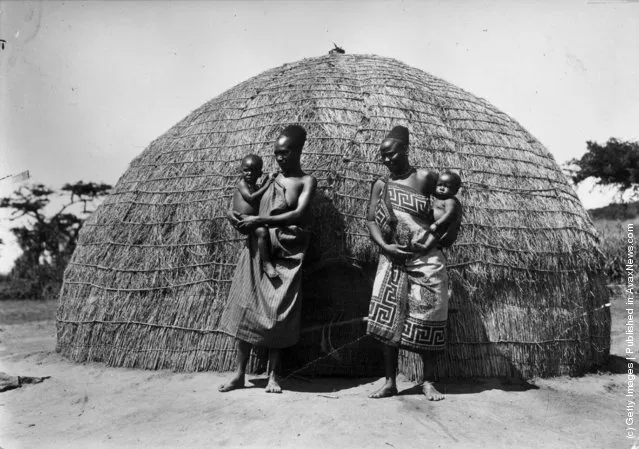
Two Zulu women holding their babies outside their home, in a kraal in South Africa. (Photo by Topical Press Agency/Getty Images). Circa 1960
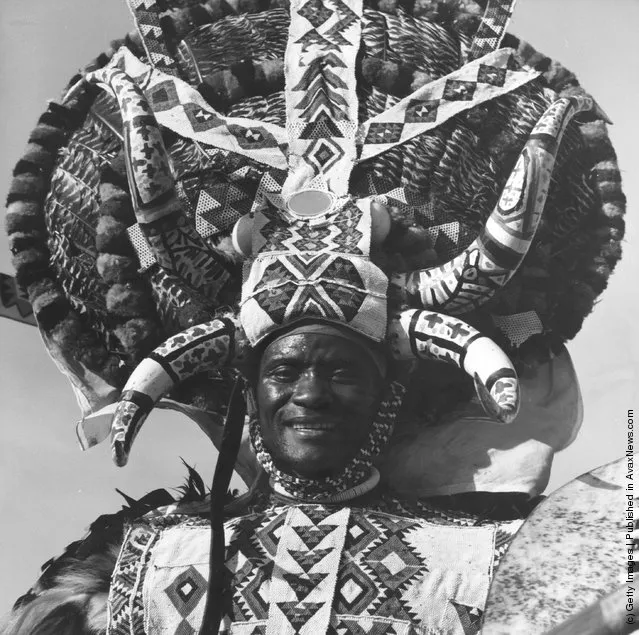
A man of the Zulu people wearing an elaborate headdress in South Africa. (Photo by Ron Stone/Fox Photos/Getty Images). August 1961
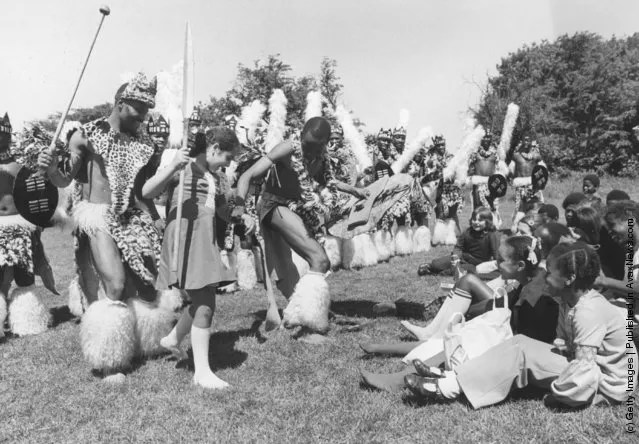
On Parliament Hill Fields members of a Zulu dance company in London to present 'Umabatha' based broadly on the story of Macbeth show a young school girl some African dance steps. (Photo by Wesley/Keystone/Getty Images). 15th June 1973
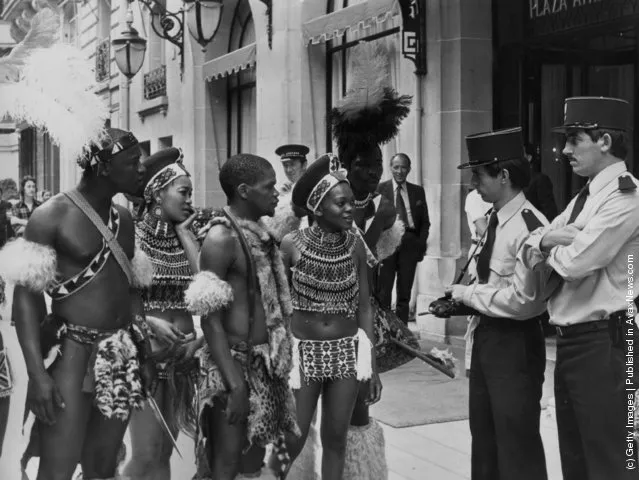
A group of South African dancers from the Zulu troupe “Ipi Tombi” becoming accquainted with two French policemen in Paris. (Photo by Keystone/Getty Images). 1977
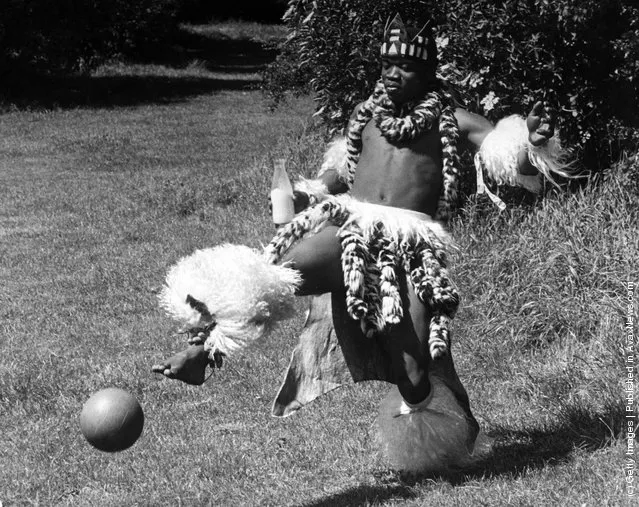
A member of the Zuly theatre company, who is appearing in “Umabatha” a story based on “Macbeth”, holding a bottle of milk and playing a game of football during a break from rehearsals in the open-air theatre at Parliament Hil Fields. (Photo by Keystone/Getty Images). 1973
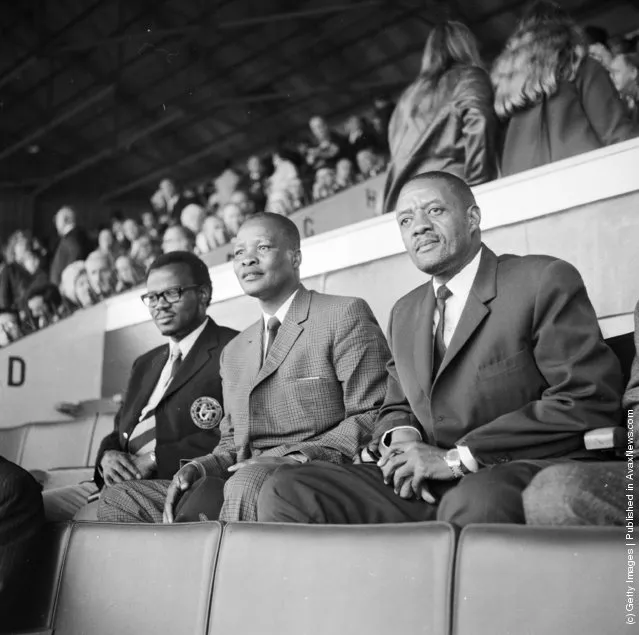
Three Chiefs of South African “Bantustan”, (from left – right), Chief Buthelezi of Zululand, Chief Lucas Mangope of Tswanaland and Chief Kaiser Matanzima watch West Ham United take on Leicester City at Upton Park. The Chiefs are in Britain as guests of the British Government. (Photo by Roger Jackson/Central Press/Getty Images)
03 Feb 2014 09:40:00,
post received
0 comments
